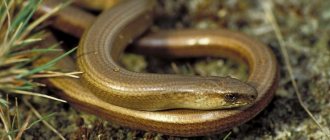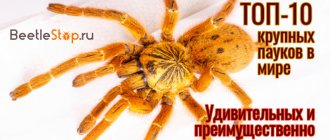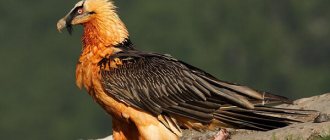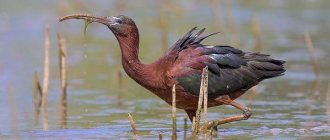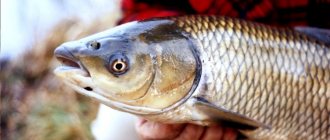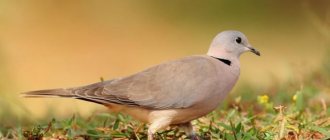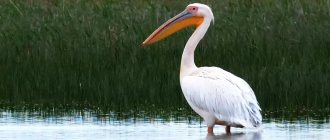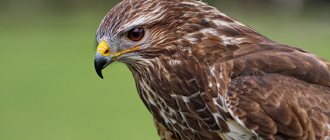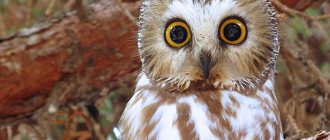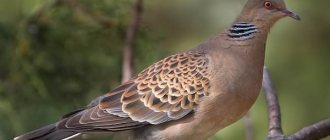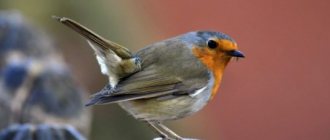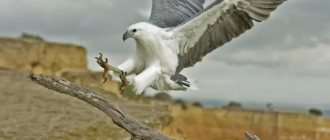Quail is a wild bird that belongs to the order Galliformes. In the old days it was of extreme interest to hunters. Today the number of the species has decreased significantly. Despite this, quails continue to be eaten and raised on special farms.
What is this bird? What appearance does she have? Where do representatives of the species live? What kind of lifestyle does a quail lead? Answers to these and other questions can be found in our publication.
Quail bird: description
Representatives of the species are the smallest birds in the gallinaceae order. The quail measures a maximum of 20 centimeters in length. Adults are capable of gaining a weight of about 130 grams. Their small body dimensions allow such birds to move nimbly in dense vegetation without being noticed by predators.
What does a common quail look like? The plumage of the bird in the back area has a brownish-yellow tint with numerous dark speckles. The bird's belly is light yellow. Thanks to this camouflage color, it is extremely difficult to notice quails among tall grasses.
Varieties
Meat and egg breeds are aimed at obtaining a product, and decorative ones for beauty
There are much fewer quail breeds than, for example, chicken breeds, so when organizing your quail farm it is easier to make a choice in favor of any breed. There are several varieties of quail breeds:
- meat;
- egg;
- meat and eggs;
- decorative
Meat, egg and meat-egg breeds are focused on obtaining a specific product, and decorative breeds are bred for beauty and participation in exhibitions.
Meat
To increase meat productivity, quails are crossed with other species
In order to increase the meat productivity of quails, breeders crossed various breeds and species, selecting the most promising individuals. As a result, highly productive hybrids were obtained, which are especially popular among poultry farmers around the world. The most successful meat varieties include the following:
- Pharaoh;
- Texas white.
The average weight of an individual reaches 300g
The Pharaoh breed was developed in the USA and later became widespread in European countries. The average weight of adult individuals reaches 270-300 grams, but individual specimens can weigh up to 0.5 kg. White Texas quail have a dense build. Females weigh up to 450 grams, males are somewhat smaller. With good care and proper nutrition, birds can reach a weight of 5.5 kg. The meat yield is up to 75% of the total weight of the bird.
Universal meat and egg breeds are not popular among poultry farmers, since in order to obtain commercial quantities of meat or eggs, it is necessary to have a very large number of livestock.
Habitat
The common quail is a bird whose nesting grounds are found almost throughout Eastern Europe. In domestic latitudes, it is widespread in Siberia, from the upper reaches of the Lena River to the Solovetsky Islands. The quail bird can also be seen in Scandinavia. There are quite numerous populations in North America. The species is found in India, China, and Mongolia.
Carcass cutting
At approximately 1.5-2 months of age before molting begins, quails are slaughtered for meat. In order to slaughter a bird and cut up a carcass, you need to have the following equipment on hand:
- deck;
- sharp knife or hatchet;
- mesh basket;
- container with boiling water for 30-50 l.
The day before slaughter, the birds are not fed, only water is given to them. The head and legs of quails are cut off with a knife or chopped off with an ax. All carcasses are placed in a basket and dipped in boiling water for 20-30 seconds, then the feathers are plucked. If there are few carcasses, this can be easily done by hand. You should start from the hip, then move to the back and end with the wings.
It is better to pluck a large batch of carcasses in a special drum-type feathering machine. It works on the principle of a centrifuge and in a short time, without much effort, removes all the plumage from quails. It is very important not to overcook the carcasses in boiling water. Birds have thin skin; after severe scalding, it can come off along with the feather. Then the quail meat will lose its presentation. You can learn how to slaughter birds correctly from the video.
Is quail a migratory bird or not?
Representatives of the species that live in latitudes where there is a consistently high ambient temperature, as a rule, do not leave their habitable places. So is the quail a migratory bird or not? Only those birds whose homeland is in rather cold regions are sent annually to southern countries.
The quail bird is practically not adapted to long flights. The maneuvers of representatives of the species in the airspace cannot be called graceful. Overcoming significant distances during seasonal migrations, they often descend to the ground to rest. From the northern regions, their path usually lies in African and Asian countries. It is here that quail spend the winter, after which they return to their birthplaces, where they reproduce.
Lifestyle
The quail leads an exclusively terrestrial lifestyle. Representatives of the species rise to the wing only when migration is necessary, or when there is an extreme threat from predators. In everyday life, the quail bird prefers to hide from enemies in dense, tall vegetation, making quick dashes.
The choice of grass cover as a habitat left a direct imprint on the habits and appearance of the bird. These miniature creatures are extremely agile. They prefer to live in small groups, making short flights from place to place. Quails hover low to the ground, performing sharp turns in the air before landing. Representatives of the species refuse to take shelter on tree branches.
These birds obtain food by digging in the ground. At the same time, they actively rake the ground with their rather powerful paws. Quail in nature likes to “bathe” in dust, which allows it to clean its plumage and get rid of parasitic insects.
Diseases
general information
Like any bird, a quail can get sick. The reasons for the development of pathologies are often non-compliance with the requirements for keeping poultry, poor-quality or missing feed, and unsanitary conditions.
Quail diseases, methods of getting rid of them and preventive measures are well described in the article “Symptoms and treatment of quail diseases.” Let's look at common ailments.
Salmonellosis
An infectious disease that occurs when there is poor ventilation of the room and large crowding of quails in one cage. It happens that the disease occurs due to poor quality food.
Symptoms: liquid droppings blocking intestinal patency.
There is no treatment. Only destruction of the population with mandatory disinfection of the cell with a 3% chloramine solution or 2.4% sodium hydroxide solution. Calculation: liter of solution per square meter of area.
Prevention: frequent cleaning, fresh water in drinking bowls, high-quality ventilation, fresh high-quality food, correct calculation of the cage area for the number of quails.
Colicbacteriosis
Infectious disease of epidemiological type. The causative agent of the disease can be in water, feed, sand.
Symptoms: the bird is lethargic, sleepy, and often falls on its feet.
Treatment: antibiotics (“Enronit”, “Lexofron”), acidophilic yogurt.
Prevention: vaccination, keeping cages clean.
Pullorosis
The infection mainly affects young animals.
Symptoms: inactivity, chicks sit on their feet. When tremors begin, they try to cluster in the corners of the cage. Dried droppings are observed in the anal area, blocking the exit of feces.
Treatment: destruction of the population, disinfection of the cell.
Prevention: prevent chickens from hypothermia, clean the cage regularly.
Aspergillosis
A disease that can affect quails at any age.
Symptoms: in adult quails the disease occurs in a latent form. Young animals experience general lethargy, blue beaks and paws, and increased thirst.
Treatment: antibiotics, vitamins, antifungal drugs (“Amphotericin”, “Itraconazole”).
Prevention: fresh food, water, disinfection and cleaning of cages.
Newcastle disease (pseudoplague)
The disease mainly affects young animals. It develops quickly, the death of diseased quails occurs in 2-15 days. The cause of infection is sick birds, contaminated eggs, or food.
Symptoms: There are two forms of the disease. In one there is a rise in temperature, paresis, paralysis, weakness, and bloody diarrhea. The other form does not show itself in any way.
Treatment: only population replacement with cell disinfection.
Prevention: keep the new bird in quarantine for two weeks. Boil eggs well for feeding quails. Feed them only high-quality food.
Nutrition
The basis of the daily diet of wild quails is food of animal origin. Representatives of the species prefer to rake the ground with their paws in search of small insects and reptiles, all kinds of worms, and invertebrates.
Wild quail also consume a large amount of plant food. They especially like young shoots and leaves of plants. The quail collects crumbled grains and seeds from the ground.
Reproduction
The mating season for common quails begins with the arrival of the first warm spring days. In the northern regions, representatives of the species begin to reproduce in early summer. Quail and quail do not form long-term unions and permanent pairs, which is often observed among other birds. Males and females mate in random order.
Quail nests are built in pre-prepared holes that are dug in the soil. Females line their surface with dry grass, as well as soft feathers. As a rule, there are about eight eggs in one clutch. In some cases, their number is more than a dozen. The eggs are small in size and brownish in color with dark spots.
The female common quail incubates her offspring for approximately 3 weeks. After fertilization, the males return to their normal existence and take absolutely no part in caring for the egg laying. The raising of chicks also falls entirely on quails.
Newly hatched quail chicks are already covered with quite thick down. As soon as the young animals dry out, they immediately begin to follow their mother everywhere, demonstrating high mobility. The chicks are growing at an incredible rate. They become absolutely independent, sexually mature individuals within 5-6 weeks from the moment of birth. By autumn, young individuals accumulate significant reserves of fat in their bodies, which serves as a source of energy for them during the upcoming seasonal migration.
Interesting Facts
For the first time, the migration of quails to winter in warm countries, in particular to Egypt, was depicted by the ancient Egyptians. Today, slabs with such designs are displayed in the Louvre in France.
Best materials of the month
- Coronaviruses: SARS-CoV-2 (COVID-19)
- Antibiotics for the prevention and treatment of COVID-19: how effective are they?
- The most common "office" diseases
- Does vodka kill coronavirus?
- How to stay alive on our roads?
Quails are space birds. Four adult birds flew with the cosmonauts in 1990, and on March 22 of this year, their first chick hatched aboard the Mir space station.
In Ancient Egypt there was a hieroglyph that depicted a young quail, and this hieroglyph meant the letter “u” or “v”.
Reasons for the decline in species numbers
To this day, the common quail remains one of the main objects of interest for sport hunting enthusiasts. In the old days, poultry production in the southern regions of our country was of a commercial nature. This attitude towards birds on the part of humans has led to a sharp decline in the number of the species. A particularly significant decrease in the number of quails is observed in forest-steppe zones. Previously, these regions had the highest population sizes.
Another reason for the gradual disappearance of the quail bird in its natural habitat is the development of land for agricultural activities. Thus, the area of grassy meadows covered with dense vegetation is reduced. It is this environment that serves as a place for the quail bird to obtain food and reproduce.
Every year, a lot of quails die during haymaking with industrial machines. Birds often abandon egg clutches when human activity begins in the fields. The problem is that the active phase of work on farmland occurs precisely during the period when quail birds hatch chicks.
What does a person do to preserve the species? In order to increase the quail population, various environmental measures are being taken. As practice has shown, the most effective solution is to create conditions for breeding young poultry in nature reserves and special farms.
Beneficial features
Quail meat is often used in all kinds of dietary menus (medicinal, children's, for weight loss, after illness). It is so popular for a reason. Due to its rich nutritional, vitamin and mineral composition, quail meat has many beneficial properties:
- provides the body with essential amino acids and fatty acids;
- cleanses the walls of blood vessels from cholesterol deposits due to a large amount of unsaturated fatty acids, which reduce its concentration in the blood;
- improves heart function;
- helps reduce blood pressure;
- makes blood vessels elastic (thanks to polyunsaturated fatty acids);
- has a general strengthening effect, which is indispensable after long-term illnesses;
- increases immunity;
- increases the number of red blood cells in the blood and the concentration of hemoglobin in the blood;
- improves liver function;
- easy to digest, therefore does not cause tension in the digestive system;
- promotes weight normalization;
- improves vision;
- prevents the deposition of uric acid salts in joints and kidneys;
- normalizes cerebral circulation and stimulates brain activity;
- improves metabolism;
- helps strengthen bones and teeth;
- prevents the occurrence of rickets in children and osteoporosis/osteomalacia in adults;
- normalizes blood glucose levels;
- promotes restoration of damaged tissues;
- increases male strength;
- has an antitumor effect.
In addition to these beneficial properties, quail meat has another undeniable advantage over other types of meat, including poultry - the absence of allergens. This allows it to be consumed even by people with severe food allergies.
But the most important beneficial property of quail meat is that kids really like its taste. Considering all the benefits and safety it has for children's health, quail meat is an ideal meat product for first complementary feeding.
Economic importance
Nowadays, quails are increasingly bred as poultry. The largest scale of such economic exploitation of birds is observed in the United States. Due to the fact that quails are not picky in their choice of food, as well as in their living and maintenance conditions, they are able to quickly reproduce in captivity.
It is worth noting that domesticated quails have undergone impressive changes compared to wild individuals. First of all, this concerns an increase in the size of eggs, the mass of which has become approximately 45% larger. In addition, domestic quails have lost their ability to fly due to unnecessary reasons. Among birds kept on farms and household plots, there is a disappearance of the instinct for nesting, incubating eggs, and subsequent care for offspring.
Today, quail eggs can be seen in almost every store. Projects for breeding these birds look like extremely promising and profitable business. Laying quails are usually kept for one and a half years. In the future, they reproduce a small number of eggs and are only suitable for meat. Quails do not live long in captivity. An age of about 4-5 years is considered extreme old age for such birds.
Composition of the product
Home-grown quail meat differs slightly from the composition of wild quail meat. Quail meat is rich in proteins, contains little fat and has virtually no carbohydrates. It contains many vitamins and minerals.
Quail meat is a product that contains purine bases in moderate quantities (50-100 mg/100 g), so it can be consumed for gout.
The composition of quail meat proteins includes all the essential amino acids that are not produced independently in the human body, but are very important for the construction of complete proteins. Nutritional value of quail meat
| Name | Content per 100 g, grams |
| Squirrels | 21,8 |
| Fats | 14,5-17,5 |
| Carbohydrates | 0,4 |
Essential amino acids of quail meat proteins
| Name | Content per 100 g, grams |
| Arginine | 1,08 |
| Valin | 0,96 |
| Histidine | 0,33 |
| Isoleucine | 0,87 |
| Leucine | 1,62 |
| Lysine | 1,49 |
| Methionine | 0,52 |
| Threonine | 0,71 |
| Phenylalanine | 0,84 |
The meat of these birds contains more fat than chicken and less than duck.
The peculiarity of these fats is that they contain 2-3 times more unsaturated fatty acids than refractory saturated ones. In addition, quail meat is low in cholesterol. Composition of quail meat fats
| Name | Content per 100 g, grams |
| Omega-3 fatty acids | 0,13 |
| Omega-6 fatty acids | 2,99 |
| Monounsaturated fatty acids | 7,06 |
| Polyunsaturated fatty acids | 3,12 |
| Saturated fatty acids | 1,32-4,66 |
| Cholesterol | 0,04-0,07 |
Quail meat is dark red in color and, like any red meat, is rich in iron.
But its content in quail is off the charts: 100 g of its meat contains 1/3 of the daily iron requirement for men and older children. In addition to iron, it also contains many other useful minerals (macro- and microelements). Macronutrient composition of quail meat
| Name | Content per 100 g, milligrams |
| Potassium | 352,0 |
| Phosphorus | 290,0 |
| Sulfur | 167,0 |
| Chlorine | 92,0 |
| Sodium | 45,0 |
| Calcium | 36,0 |
| Magnesium | 25,0 |
Microelement composition of quail meat
| Name | Content per 100 g, micrograms |
| Iron | 3700,0 |
| Zinc | 2400,0 |
| Copper | 394,0 |
| Cobalt | 25,0 |
| Manganese | 20,0 |
| Chromium | 20,0 |
| Selenium | 17,4 |
| Fluorine | 10,0 |
| Molybdenum | 2,0 |
Quail meat contains many vitamins, which, together with minerals, play an important role in the metabolic processes of the human body.
Vitamin composition of quail meat
| Name | Content per 100 g, milligrams |
| Vitamin A | 0,12 |
| Vitamin B1 | ,1 |
| Vitamin B2 | 0,28 |
| Vitamin B4 | 150,0 |
| Vitamin B5 | 0,79 |
| Vitamin B6 | 0,53 |
| Vitamin B9 | 0,007 |
| Vitamin B12 | 0,47 |
| Vitamin PP | 8,3 |
| Vitamin C | 7,2 |
| Vitamin D | 7,8 |
Quail meat is considered dietary: its calorie content is 134-170 kcal.
Quail hunting
In the old days, quail fishing was done at the beginning of summer. The hunt began at sunset. Nets were spread across the grass. The hunter was located nearby, making sounds imitating the cry of a bird using a special pipe. When the lured quail approached the trap, it immediately became entangled in the net.
Today, representatives of the species are most often hunted with a gun and dogs. The height of the fishery occurs during the seasonal migrations of the bird. Hunting using nets these days is carried out only with the appropriate permission obtained from the environmental authorities. In this case, only males are caught, which are fattened and handed over to procurement organizations. In order to preserve quail populations in the wild, females caught in the net are released into the wild.
Breeding
Breeding is possible only with the help of an incubator, since quails have a poorly developed maternal instinct
Raising young quails in an incubator is considered the most convenient for home use. To do this, it is enough to purchase high-quality eggs from a trusted manufacturer and place them in an industrial or home-made incubator. An incubator is necessary in any case, since quails have completely lost their instinct to hatch. You can use eggs from your own laying hens, but when choosing them you should follow some rules:
- the female must be between two months and one year old;
- you should not take the smallest and largest eggs;
- the surface of the shell should not have any flaws;
- the shell should be smooth and matte.
Before placing eggs in the incubator, it is recommended to view them through an ovoscope or using a flashlight. The presence and size of air chambers, possible bloody inclusions and mixed contents are checked when the white and yolk are one.
Features of keeping at home
Raising quails is not a difficult task. These birds lend themselves well to taming and domestication, like chickens. They can be kept in terrariums and cages, where there can be 4-5 birds. There are no nests or perches for them. In captivity, females lay eggs directly on a substrate of soil and dry grass.
Places where quails are kept are equipped with drinkers and feeders, which are fixed to grates outside. The terrarium or cage is located in a warm, dry room where moderate lighting is maintained throughout the day. It is not recommended to take quails out into the open, as this leads to nervous agitation and clashes with their relatives.
Breeding representatives of the species in captivity is possible only by incubating eggs. After all, domesticated females do not feel the need to hatch offspring. Breeders often place quail eggs in chickens. However, in this case, there is a possibility that they will be crushed.
Quails are fed mainly grain. Their daily diet includes barley, buckwheat, millet, and oatmeal. Such birds feel the need for a significant amount of protein food, which is used as minced meat, chopped fish, and cottage cheese. Quails are also fed nettles, carrots, and cabbage. Every day the birds are offered eggshells and fine gravel.
How to cook
Before you start cooking the quail, you need to immerse it in boiling salted water for a few minutes. After boiling, the broth must be drained and the carcass washed. This can protect yourself from possible bacterial contamination of the carcass.
After initial processing and disinfection, the quail is ready for cooking. You can cook quail in different ways:
- steamed (the most dietary method);
- boiling;
- stewing;
- baking;
- hot;
- Grilled.
Quails are often stuffed before frying or baking. For filling you can use:
- mushrooms, including truffles;
- vegetables;
- fruits (quinces, apples, oranges);
- dried fruits (raisins, dried apricots, prunes);
- other fruits (chestnuts);
- cheese;
- offal (liver, heart).
Serve as a side dish for quail:
- rice;
- buckwheat;
- legumes;
- vegetables;
- salads;
- greenery;
- olives.
The exquisite delicate taste of fried quail is emphasized by spicy sauces:
- berry (grape, currant, cranberry);
- tomato;
- mushroom;
- sour cream;
- wine;
- garlicky.
There are a lot of recipes for preparing quail dishes in different cuisines of the world:
- in France, quails are stuffed with mushrooms and vegetables;
- in Italy broth and soups are made from this bird;
- in Greece, fried quail is served with olives, lemon and salad;
- in the countries of the Middle East, pilaf and couscous are prepared from this bird.
Quail meat is very tender and can easily dry out. This must be taken into account when preparing, especially for the first time. Fried quail is very tasty, they have a crispy crust, but little nutrients are retained in the meat with this method of cooking. The healthiest and most dietary quail dishes are those that are steamed.
Steamed quail with vegetables
To prepare this dish you will need quail, new potatoes, young cabbage, vegetable oil, salt and spices to taste. The quail should be rubbed with coarse salt, and the remaining salt should be shaken off so that the meat does not turn out to be salty. Then grease the surface of the carcass with vegetable oil and spices to taste and leave to marinate in the refrigerator. After a few hours, place the quail in a steamer in a shallow bowl, and place coarsely chopped young vegetables next to it in a flat bowl. Cover the steamer with a lid and cook for 1-1.5 hours. You can make a sauce from the broth that comes out of the quail.
Hunting-style fried quail
For this dish, take quails, grape leaves and butter. Salt the carcasses, grease them with butter and wrap them in grape leaves. To prevent the leaves from unfurling, you need to strengthen them with threads. To marinate, you need to leave the prepared carcasses for 30-40 minutes. Fry in a heated frying pan in butter for 7-10 minutes on each side.
